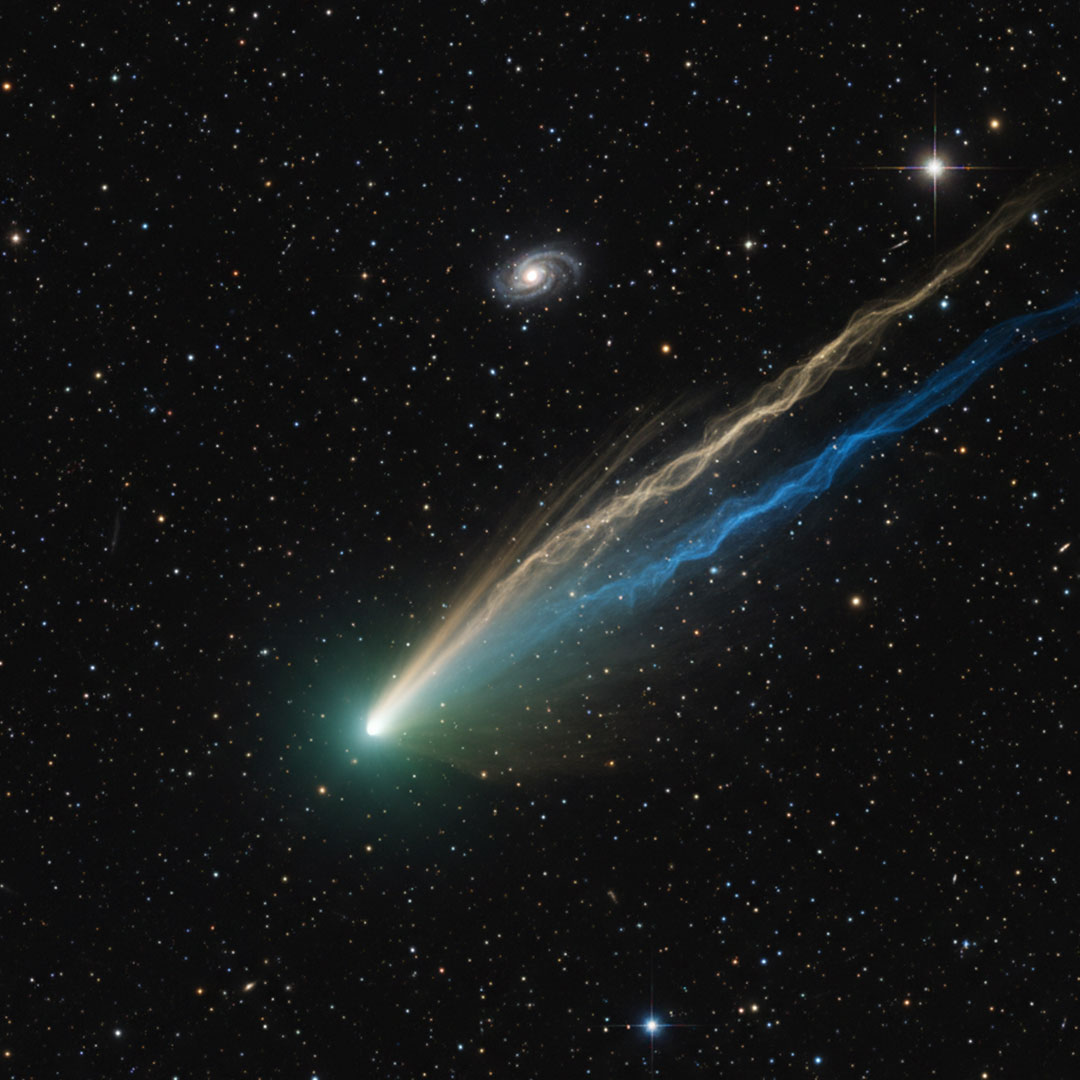
Comet C/2025 R2 (SWAN)
We’ve already met the solar system’s newest guest, Comet C/2025 R2 (SWAN). Although it’s still early, this comet is already generating excitement among amateur and professional astronomers. In this post, we’ll tell you what we know about it.
Who discovered it and why is it called that?
On September 11, 2025, Ukrainian amateur astronomer Vladimir Bezugly, while analyzing images from the SWAN (Solar Wind Anisotropies) instrument onboard the NASA-ESA SOHO solar observatory, detected a diffuse object with an apparent magnitude of 7.4 and an impressive tail about 2 degrees long.
During its closest approach to the Sun, comet C/2025 R2 (SWAN) was hidden by the Sun’s glare due to the “Holetschek effect.” This effect occurs when a comet, near its perihelion, is hidden by the Sun’s glare due to its low solar elongation (less than 30-35°).
Now that it has emerged, its brightness has increased rapidly, going from magnitude 11 to 6.9 in just a few weeks. Astronomers believe it could maintain this brightness, although there is a possibility that it could disintegrate.
It is named after a non-periodic comet discovered in September 2025, the second reported in that two-week period. The name “(SWAN)” honors the SWAN instrument at the SOHO observatory, which enabled amateur astronomer Vladimir Bezugly to detect it on September 11, 2025.

Comet C/2025 R2 (SWAN) Image Credit & Copyright: Team Ciel Austral
Why is it so interesting?
Potential brightness: Its current magnitude (+6.9 on September 17, 2025) and rapid evolution (from 11 to 8 in weeks) suggest it could reach magnitude 5.8 in October, visible with binoculars or even with the naked eye in dark skies, making it accessible to amateurs.
Unique orbit: Its hyperbolic, or extremely long-period, trajectory (thousands of years) means it is a rare traveler, possibly originating from the Oort cloud, offering a window into early solar system material.
Dynamic event: Its close proximity to Earth (0.26 AU on October 19-20) and the possible orbital plane crossing on October 5, which could generate a meteor shower, add a factor of unpredictability and excitement.
Amateur discovery: Vladimir Bezugly’s discovery using SOHO data highlights the role of amateur astronomy in connecting the global community in observing this phenomenon.
What can we expect from C/2025 R2 in the near future?
Comet C/2025 R2 (SWAN) is full of promise, but its future is a cosmic mystery.
In the coming weeks, it could maintain or even increase its current brightness of magnitude +6.9, perhaps approaching magnitude +6, making it easier to spot with binoculars, especially in the Southern Hemisphere, although northern observers could also begin hunting it in the evening.
By early October, its brightness could reach magnitude 5.8, perhaps visible to the naked eye in dark skies. By October 19-20, when it is just 0.26 AU (39 million km) from Earth, its coma and tail could look spectacular… or not, if the comet disintegrates.
By November, as it crosses the celestial equator, it could be more globally accessible, but its fate depends on how well it withstands the sun’s heat.
We recommend following its evolution on sites like TheSkyLive, EarthSky, or NASA’s APOD, where you can find fascinating facts about the comet, such as its distance from Earth, its light curve, a visualization of its orbit, and much more.

 Español
Español
